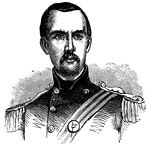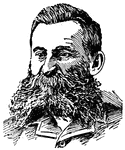
Civil War Musical Entertainment
"Extempore musical and terpischorean entertainment at the United States arsenal, Baton Rouge, La., under…

Village of Clarksburg
"Village of Clarksburg, Western Virginia, headquarters of General Rosecrans. Clarksburg, a post village,…
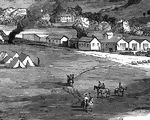
Village of Clarksburg
"Village of Clarksburg, Western Virginia, headquarters of General Rosecrans. Clarksburg, a post village,…
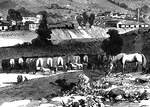
Village of Clarksburg
"Village of Clarksburg, Western Virginia, headquarters of General Rosecrans. Clarksburg, a post village,…
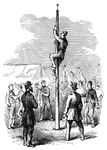
Climbing Pole
"Soldiers climbing up a greased pole. Thanksgiving festivities at Fort Pulaski, Ga., Thursday, November…
Fort Clinch
"Exterior view of Fort Clinch, on Amelia Island, Fla., commanding the Harbor of Fernandina, captured…
Fort Clinch
"Interior view of Fort Clinch, on Amelia Island, Fla., commanding the Harbor of Fernandina, captured…

Entering Clinton
"General McPherson entering Clinton, Miss. To facilitate the movements of the Federal armies near Chattanooga…

Battle of Coal Harbor
"Grant's Campaign in Virginia. The Battle of Coal Harbor, June 1st, 1864. On the 1st of June the Confederates…
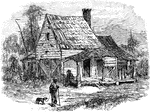
Battle of Cold Harbor
This sketch depicts the famous New Cold Harbor where the Battle of Cold Harbor took place. This was…

Prison Pen at Columbia
"Appearance of the prison pen at Columbia, S. C., on the arrival of Sherman's army."— Frank Leslie,…

Columbus, Kentucky
"General view of Columbus, Ky., and its fortications, looking down the river, showing the 'Iron Bluffs'…
Commissariat Depot
"Commissariat Depot of the United States Army of the Rappahannock at Manassas, Va. Our sketch shows…
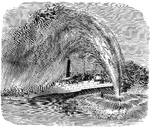
Commodore Barney
"The war in Virginia. Explosion of a torpedo under the Commodore Barney, on James River, August…
Confederate Army
"The Confederate army, under early, surprising the Federal forces at Cedar Creek, on the morning of…

Confederate Batteries
"Fredericksburg, Va., and the Confederate batteries and pickets, as seen from Falmouth Heights, headquarters…

Shelling of Confederate Camp
"Shelling of a Confederate camp on the Potomac by Lieutenant Tompkins, of the First Rhode Island battery.…

Confederate Cavalry
"Confederate cavalry driving stragglers and skulkers back to their duty at the Battle of Antietam. One…

Confederate Fort
"Ruins of Confederate fort on the southeast side of Atlanta, with chevaux-de-frise and abatis in front."—…

Confederate Fortifications
"Interior of the principal Confederate fortifications near New Berne, N. C., after their capture by…

Burning of Confederate gunboats
"Burning of the Confederate gunboats, rams, etc., at New Orleans and Algiers, on the approach of the…

Confederate Invasion
"The Confederate invasion of Maryland and Pennsylvania. The Confederate cavalry crossing the Potomac,…

Confederate Position
"Confederate position near Centreville, Va., at the crossing of the Orange and Alexandria Railway over…

Confederate Prison Camp
"The Confederate Prison camp at Belle Isle, James River, Va."— Frank Leslie, 1896
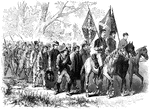
Confederate Prisoners
"Confederate Prisoners brought in after the Battle of Chancellorsville."— Frank Leslie, 1896
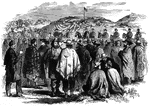
Confederate Prisoners
"Group of Confederate prisoners captured at Fort Donelson, on the morning after the surrender, clothed…

Confederate rams
"Confederate rams from Charleston Harbor attacking the Federal blockading squadron, January 31st, 1863.…

Attack on Confederate Works
"Siege of Vicksburg, attack on the Confederate Works, May 22nd, 1863. Our sketch represents the terrible…
Confederates
"Confederates in ambush firing on a reconnoitring expedition to Oyster Creek, Roanoke Island, N.C."—…

Confederates Crossing the Potomac
This sketch depicts the Confederates crossing the Potomac during the Maryland Campaign or the Antietam…

Conrad's Ferry
"Conrad's Ferry, Md., above Harrison's Island, on the Potomac River, the place of passage of Colonel…
!["A New Year's Day Contraband Ball at Vicksburg, Miss. The [African Americans] preserve all their African fondness for music and dancing, and in the modified form which they have assumed here have given rise to [African American] dancing and melodies in our theatres, a form of amusement which has enriched many."— Frank Leslie, 1896](https://etc.usf.edu/clipart/11600/11644/contra-ball_11644_mth.gif)
Contraband Ball
"A New Year's Day Contraband Ball at Vicksburg, Miss. The [African Americans] preserve all their African…
!["The war in Virginia- contrabands coming into the Federal camp. The [African American] furnishes, in his various phases of existence, wonderful studies for the artist and philosopher. Never, perhaps, has a race seen such a moment as during the Civil War, when the chains of bondage were breaking from the limbs of 4,000,000 of men. The distant roar of battle was to them a sound of deliverance. With all the uncouth, odd and queer manifestations of joy they prepared to reach the camp of the delivering Yanks. Yoking together most incongruous teams before the farm wagons of their fled masters, with ass and ox and horse, with household gear queerly assorted, with useless truck and little that could rarely serve them, they started for the Promised Land, and might often have been seen coming in as our artist, a most close student of nature, depicted them, with his usual felicity of portraiture."— Frank Leslie, 1896](https://etc.usf.edu/clipart/11700/11752/contrabands_11752_mth.gif)
Contrabands
"The war in Virginia- contrabands coming into the Federal camp. The [African American] furnishes, in…
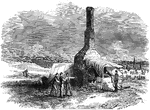
Cookhouse
"Army cookhouse constructed in an old chimney of an outhouse of the Lacy Mansion, on the Rappahannock,…
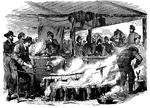
Cooking in Camp
The kitchen of the Fremont Dragoons at Tipton, Missouri. Tipton, which is 38 miles from Jefferson City,…
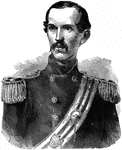
Michael Corcoran
"General Michael Corcoran, born in Carrowkeel, County Sligo, Ireland, September 21st, 1827, died near…
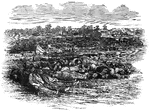
Battle of Corinth
"Battle of Corinth, Miss., October 4th, 1862. Scene in the roundabouts of Fort Robinett after the repulse…

Evacuation of Corinth
Evacuation of Corinth, Mississippi- burning of stations, warehouses and supplies- entry of Federal Troops.…
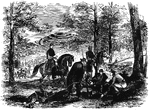
Battle of Corrick's Ford
"Battle of Carrick's Ford, Western Virginia- discovery of the body of General Garnett, by Major Gordon…

Cotton-plant
A plant of several species, all growing in warm climates, and bearing the cotton of commerce.
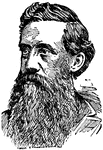
Elliott Coues
(1842-1899) Ornithologist who served as assistant surgeon in the Union Army. His Birds of the Colorado…

Craney Island
"Blowing up the Confederate forts on Craney Island, by Commodore Goldsborough, June 2nd 1862." —…

Creek Railroad Bridge
"Burning of the gunpowder Creek Railroad Bridge, on the Philadelphia and Baltimore Railroad, by the…

General Thomas L. Crittenden
"General Crittenden, born in Russellville, Ky., May 15th, 1815, studied law under his father, was admitted…
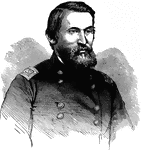
General George Crook
"General Crook, born near Dayton, O., September 8th, 1828, died in Chicago, Ill., March 21st, 1890,…

Battle of Cross Keys
"The Battle of Cross Keys- opening of the fight- the federal troops, under General Fremont, advancing…

Battle of Cross Keys
"Battle of Cross Keys, Sunday June 8th, 1862- centre and front of the Federal army in the engagement.…
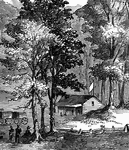
Battle of Cross Keys
"The Battle of Cross Keys- opening of the fight- the federal troops, under General Fremont, advancing…

Battle of Cross Keys
"The Battle of Cross Keys- opening of the fight- the federal troops, under General Fremont, advancing…
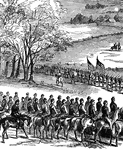
Battle of Cross Keys
"The Battle of Cross Keys- opening of the fight- the federal troops, under General Fremont, advancing…
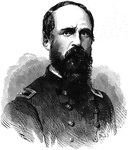
Colonel E. E. Cross
"Colonel Cross, born in Lancaster, N. H., April 22nd, 1832, died near Gettysburg, Pa., July 22nd, 1863.…
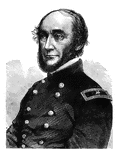
General George W. Cullum
"General Cullum, born in New York city, February 25th, 1809, died in New York city, February 28th, 1892,…
Culpepper Courthouse
"Culpepper Courthouse, or Fairfax, capital of Culpepper County, Va. This pretty little place, more frequently…




